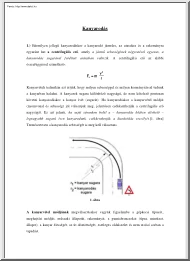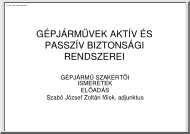Datasheet
Year, pagecount:2016, 2 page(s)
Language:English
Downloads:2
Uploaded:November 29, 2018
Size:825 KB
Institution:
[FAA] Federal Aviation Administration
Comments:
Attachment:-
Download in PDF:Please log in!
Comments
No comments yet. You can be the first!Most popular documents in this category
Content extract
Source: http://www.doksinet The Risk Is Real Construction of meteorological and other towers in rural areas throughout the United States is a concern to many in the aviation industry. Often these towers do not have lights or other marking devices, and they are just under 200 feet tallfalling outside FAA regulations governing tall structures. The dull color and small footprint can make these uncharted towers difficult to see. In addition, they can be erected in hours, making these vertical obstacles a major safety risk to helicopter emergency medical evacuation services, aerial applicators, law enforcement, aerial firefighting, predator control, pipeline patrols, aerial wildlife surveys, military operations, and others. The number of meteorological, cell phone, wind TOWERS Unlit + Unmarked + Uncharted = Undetected energy, and other towers erected in agricultural regions throughout the United States has increased significantly during the past several years. Due to the expected growth
in the wind energy industry, the The Danger of Towers to Our Aviation Community increase is projected to continue. Remember, adhere to 14 CFR 91.119 Minimum Safe Altitudes w w w. FA A S a f e t y g o v Your Aviation Safety Web Site Team HQ111375 Source: http://www.doksinet Four Safety Tips Help You Avoid Meteorological Towers 1. Towers can be erected in hours! 3. The tower color may be difficult to see! Ag operators and pipeline flyers returning to a field after a few days or a few hours may find a tower that wasn’t there earlier. 2. Towers may have a small footprint! The small size may leave little ground disturbance (footprint) to indicate the tower’s presence. At times, however, the footprint may be easier to spot than the tower itself! Many towers are just under 200 feet tall, dull gray, and unlit, and they do not have markers to note any support cables. Check the Internet to see if your state maintains a tower registry, and check your route as part of the preflight.
4. Ferry above 5 and stay alive! Aerial application’s Professional Aerial Applicators’ Support System® (PAASS) safety program slogan reminds pilots to fly above 500 feet except when the operation requires flying at a lower altitude. www.FAASafetygov Tower Many towers are just below 200 feet in height, only a few inches in diameter, and unlit, making them very difficult to see from the air
in the wind energy industry, the The Danger of Towers to Our Aviation Community increase is projected to continue. Remember, adhere to 14 CFR 91.119 Minimum Safe Altitudes w w w. FA A S a f e t y g o v Your Aviation Safety Web Site Team HQ111375 Source: http://www.doksinet Four Safety Tips Help You Avoid Meteorological Towers 1. Towers can be erected in hours! 3. The tower color may be difficult to see! Ag operators and pipeline flyers returning to a field after a few days or a few hours may find a tower that wasn’t there earlier. 2. Towers may have a small footprint! The small size may leave little ground disturbance (footprint) to indicate the tower’s presence. At times, however, the footprint may be easier to spot than the tower itself! Many towers are just under 200 feet tall, dull gray, and unlit, and they do not have markers to note any support cables. Check the Internet to see if your state maintains a tower registry, and check your route as part of the preflight.
4. Ferry above 5 and stay alive! Aerial application’s Professional Aerial Applicators’ Support System® (PAASS) safety program slogan reminds pilots to fly above 500 feet except when the operation requires flying at a lower altitude. www.FAASafetygov Tower Many towers are just below 200 feet in height, only a few inches in diameter, and unlit, making them very difficult to see from the air





 Just like you draw up a plan when you’re going to war, building a house, or even going on vacation, you need to draw up a plan for your business. This tutorial will help you to clearly see where you are and make it possible to understand where you’re going.
Just like you draw up a plan when you’re going to war, building a house, or even going on vacation, you need to draw up a plan for your business. This tutorial will help you to clearly see where you are and make it possible to understand where you’re going.